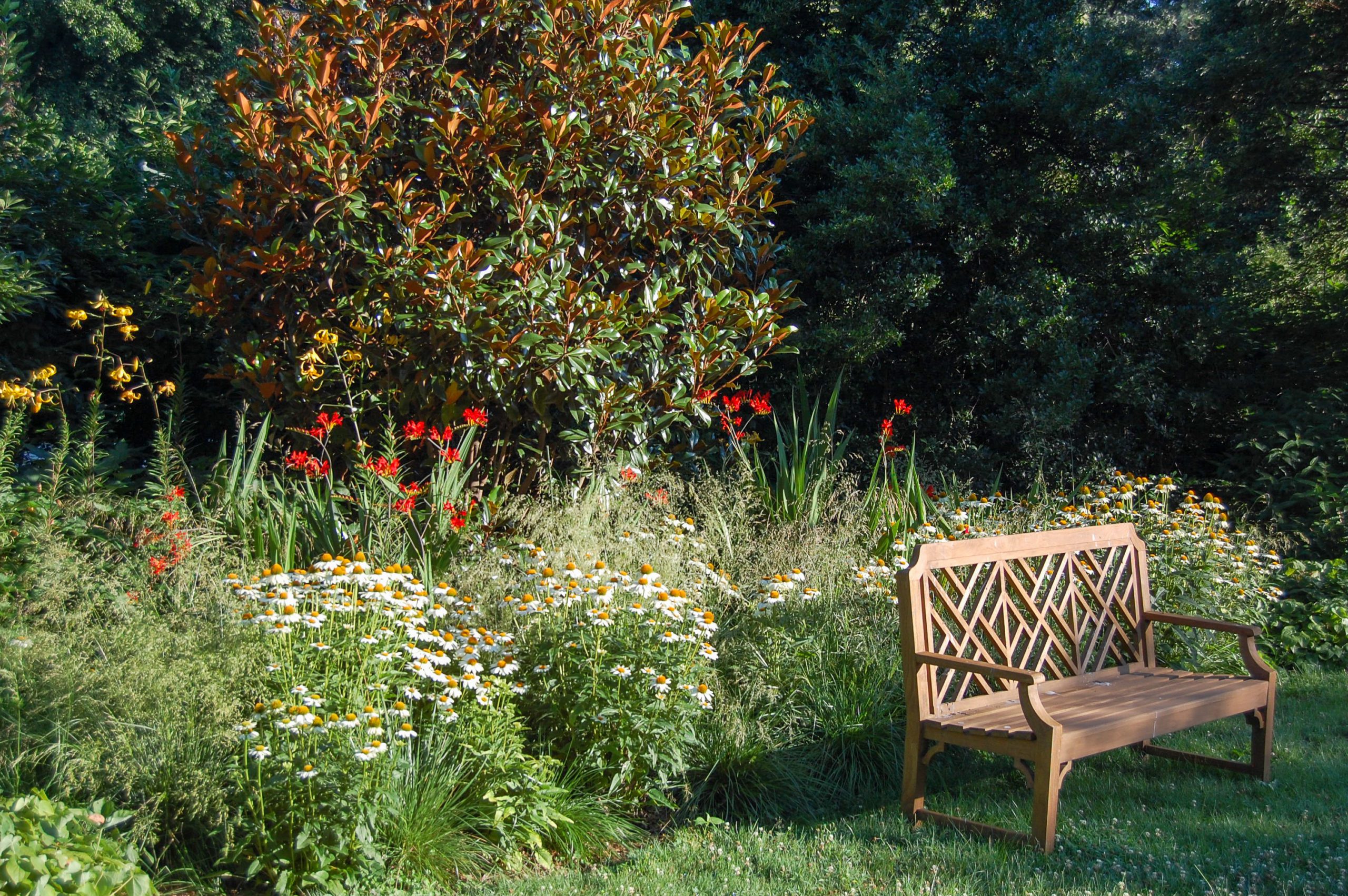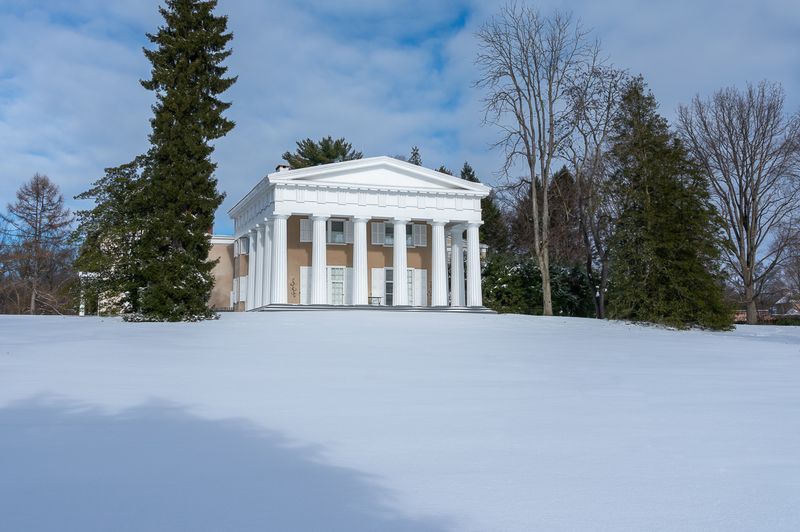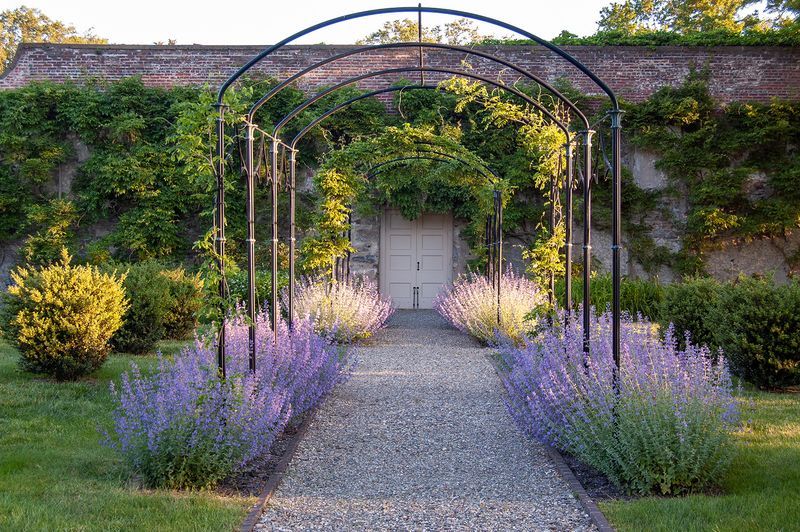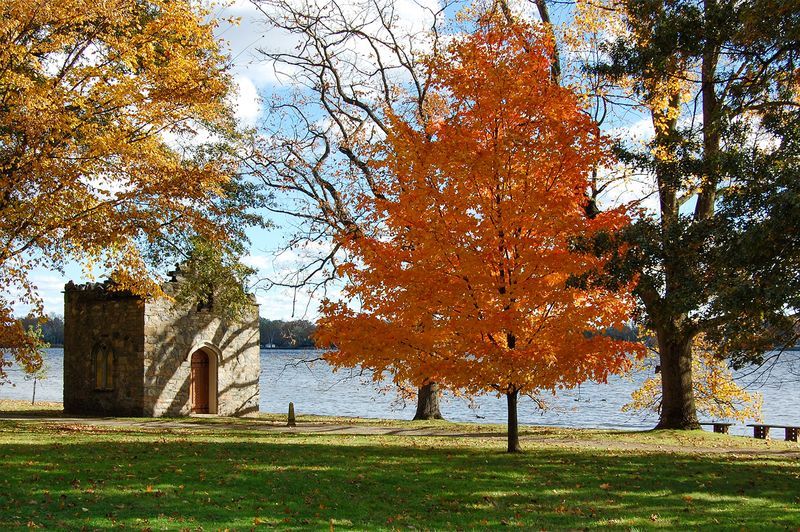May 4, 2021
A History of the Green Walk
The musings of James Biddle (1929-2005) were included in the Friends of Andalusia newsletter, The Column, in the Fall 2004 edition. With the recent changes to Andalusia’s gardens by designer Arabella Lennox-Boyd, James Biddle’s recollections, with the addition of photos from the Andalusia archives, is worthy of sharing again.
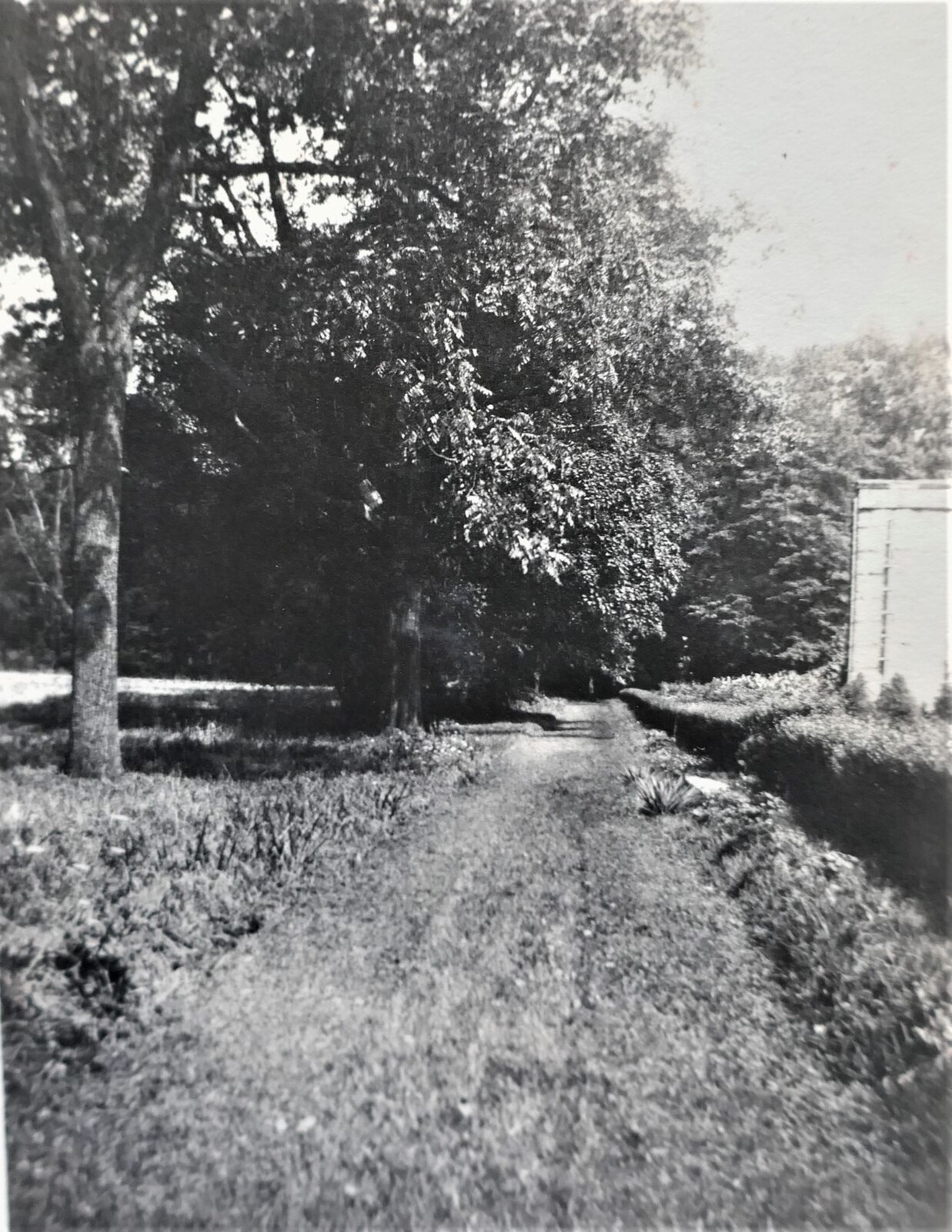
Green Walk, 1918.
EARLY BEGINNINGS WITH EMMA
To the best of my recollection, the first attempt to establish a flower bed along the Green Walk in front of the boxwood row was undertaken by my nurse, Emma Meier. Emma spent most of her life at Andalusia, first as my nanny, then as a housekeeper and lady’s maid to my mother. She was an avid gardener and helped me create my first one. My little garden was in the Laundry Yard, then bordered by an early 19th Century washhouse, ladies’ bathhouse, woodshed and privies. These buildings are currently the gift shop, movie theatre and four modern restrooms. Emma’s and my garden centered on an enormous walk-in wooden packing crate, out of which the estate carpenter created a one room house complete with a door, windows, shutters and even a front porch with wooden flower boxes. The interior was done up with child sized furniture, pictures, china and even chintz curtains taken from the Big House supply. All this was my own domain to rule over in those childhood years.
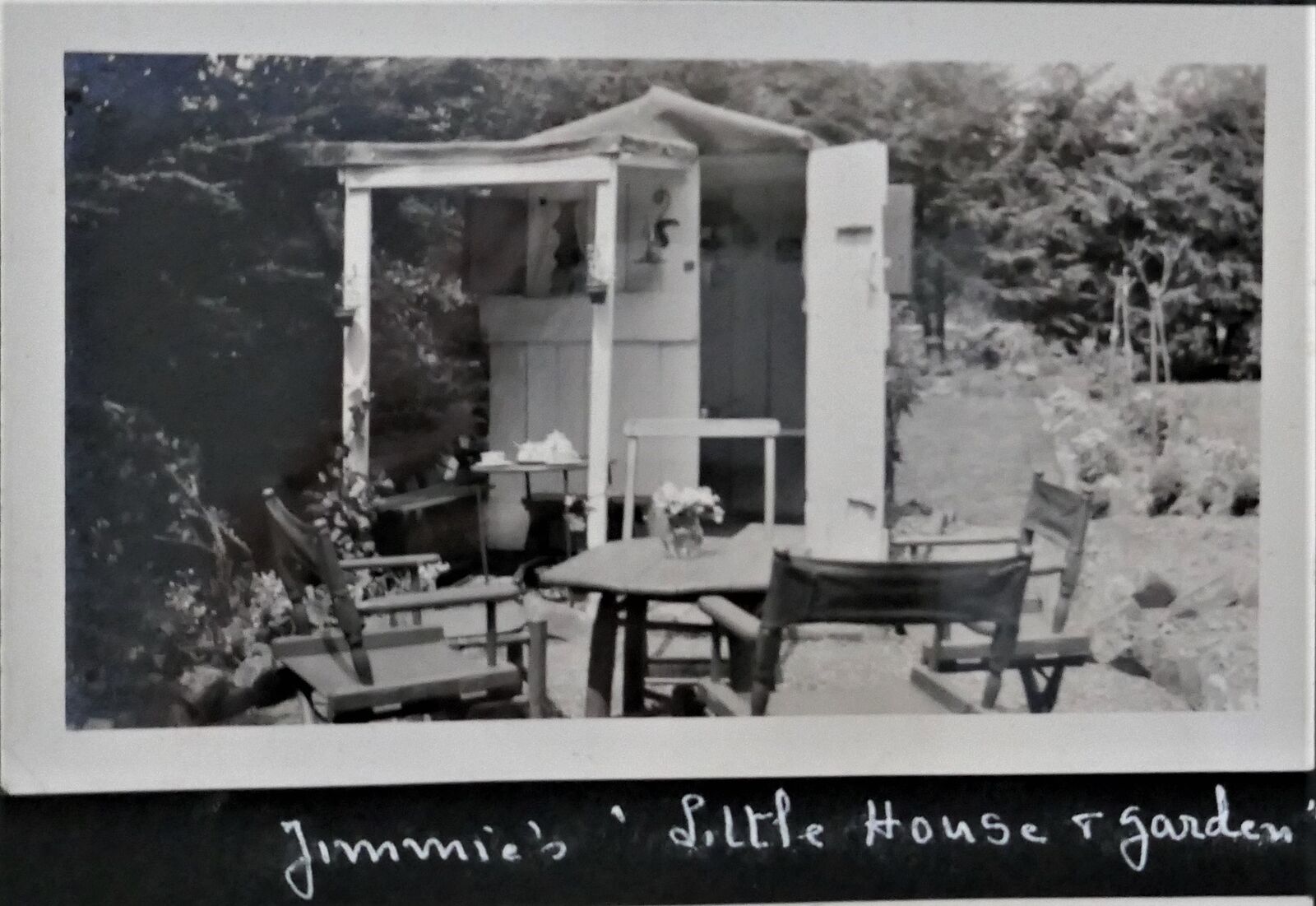
Jimmie’s “Little Garden House,” c 1940.
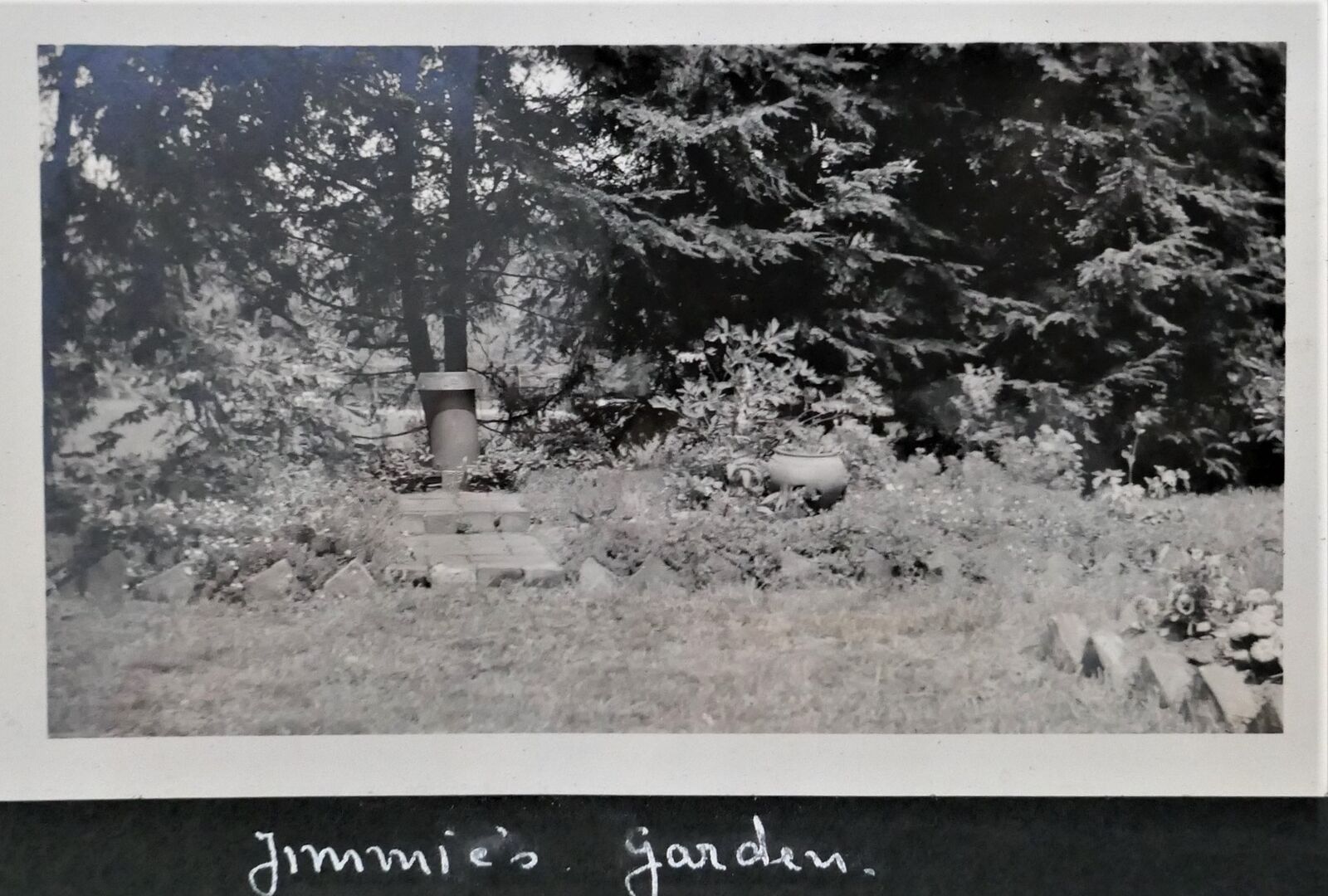
Jimmie’s Garden, c 1940.
Emma, having achieved this small victory, now turned her attention to the “Green Walk”. The “Green Walk” was separated on the one side from the Walled Garden by a low hedge of American boxwood. The other side of the Walk was simply a mowed field with no separation from the Walk. This lack of definition challenged Emma’s German-Swiss nature to bring more order to the scene.
Emma began with the hedge side where she felt an Alpine rock garden would be suitable! Up from the river came an assortment of rocks to be arranged along the length of the boxwood hedge; then heaps of earth fill followed by an assortment of rock plants. My family seemed to have very little to say about all this. However, my grandmother, Letitia Glenn of Baltimore, who ruled the principal gardens, and I presume the gardeners, must have offered encouragement. So began the more formal “Green Walk”
Weeding
My next clear memory is weeding. Andalusia was still very rural. To get to school took 45 chauffeur-driven minutes each way on back roads. My classmates, pondering the family chauffeur, asked if I actually had a mother. Few parents wanted to drive their offspring so far for after-school play, so I was often left alone with Andalusia staff’s offspring as playmates. To fill those hours, I was assigned by Emma to weeding – usually the “Green Walk” which was established and flourishing.
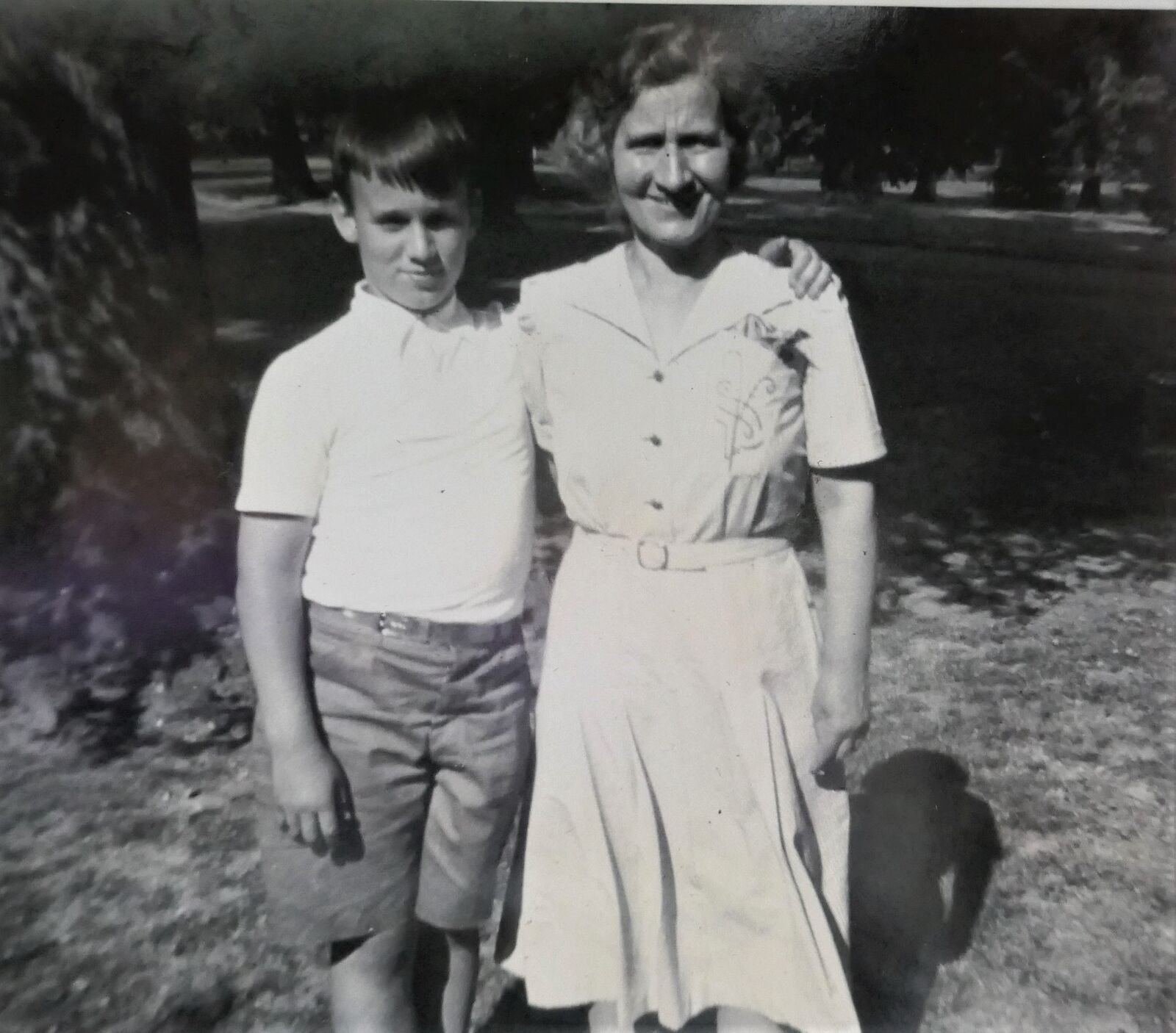
Jimmy Biddle and Emma Meier, c 1940.
CHANGES WITH THE WAR
Then came World War II. I went to boarding school and the groundsmen went off to war and acres of lawn returned to fields. Victorian bedding disappeared, but Emma, even as she aged, watched over the “Green Walk”. Time passed, as did my college years, but the seeds of sowing had been firmly planted in me. The beds along the boxwood grew wider, alpine rocks and plants retreated, bulbs, perennials and annuals pushed forward. Gardeners had returned from the war, lawns reappeared, and my mother and I took on more elaborate borders while my father carefully monitored the two hundred year old trees and their replacements, which he planted.
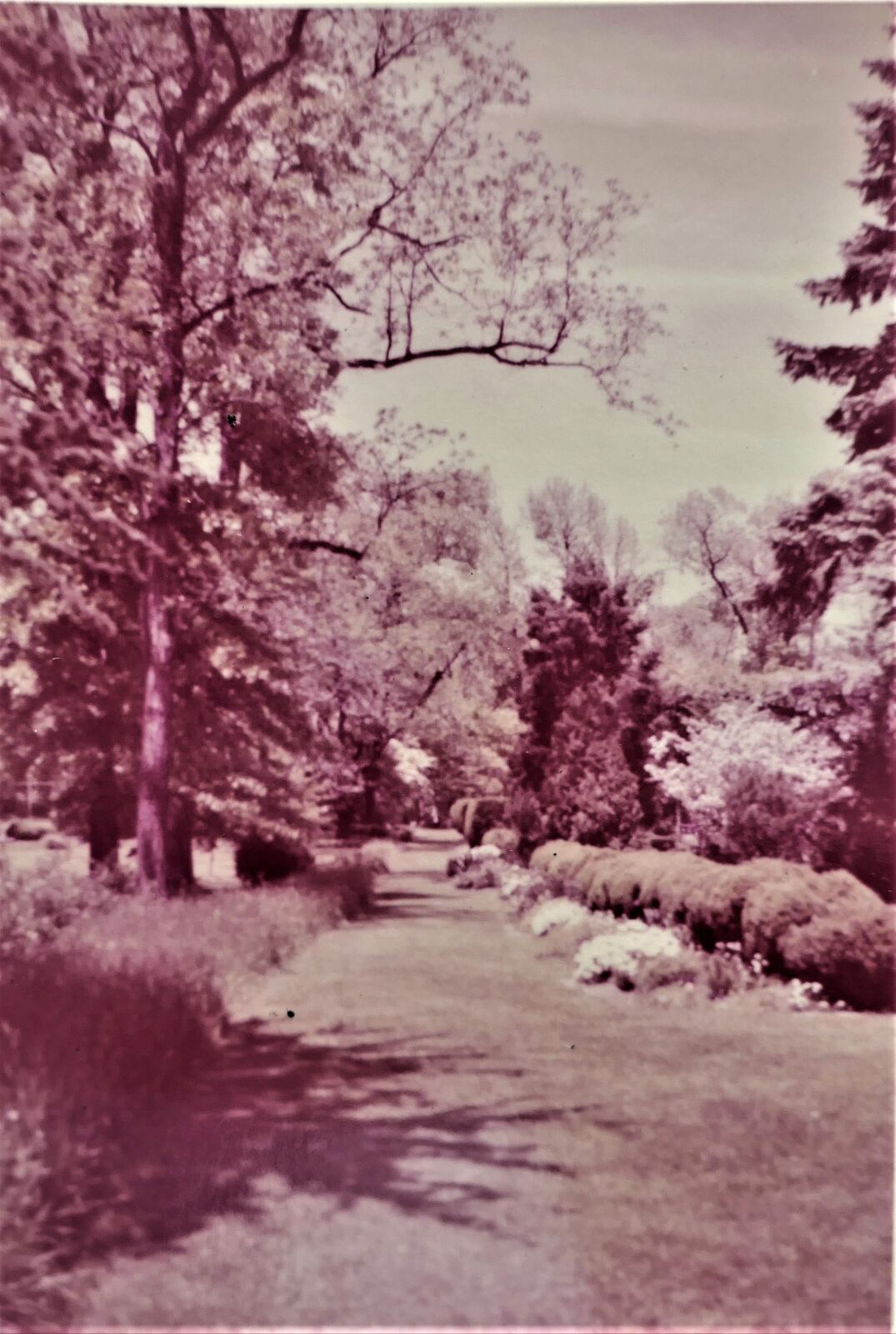
Green Walk, 1956.
THE BERGMANS’ DONATION
The “Green Walk” became my focus when I was living in Washington with my family as President of the National Trust for Historic Preservation. Amongst numerous letters of preservation appeals was one requesting help in the conservation of a 30 year-old garden of dwarf conifers and maples. I knew nothing of this garden, although it was located close to Andalusia on the property of Mr. and Mrs. Bergman. The Bergmans were being overrun by housing developments and moreover were seriously ill. The gardens had become too much to maintain.
Intrigued by this most unusual preservation problem, I visited the Bergmans and their extensive Japanese-inspired hillside gardens, home to a most extraordinary collection of dwarf trees. The Bergmans had begun to sell to public arboretums, but innumerable species were available in the gardens and the accompanying small nursery. It was impossible to save the gardens on site. The Bergmans had never visited Andalusia although they knew of it. I invited them to lunch and we toured the grounds. When we reached the “Green Walk”, they saw the unplanted side. This was where their collection should go! And go it did.
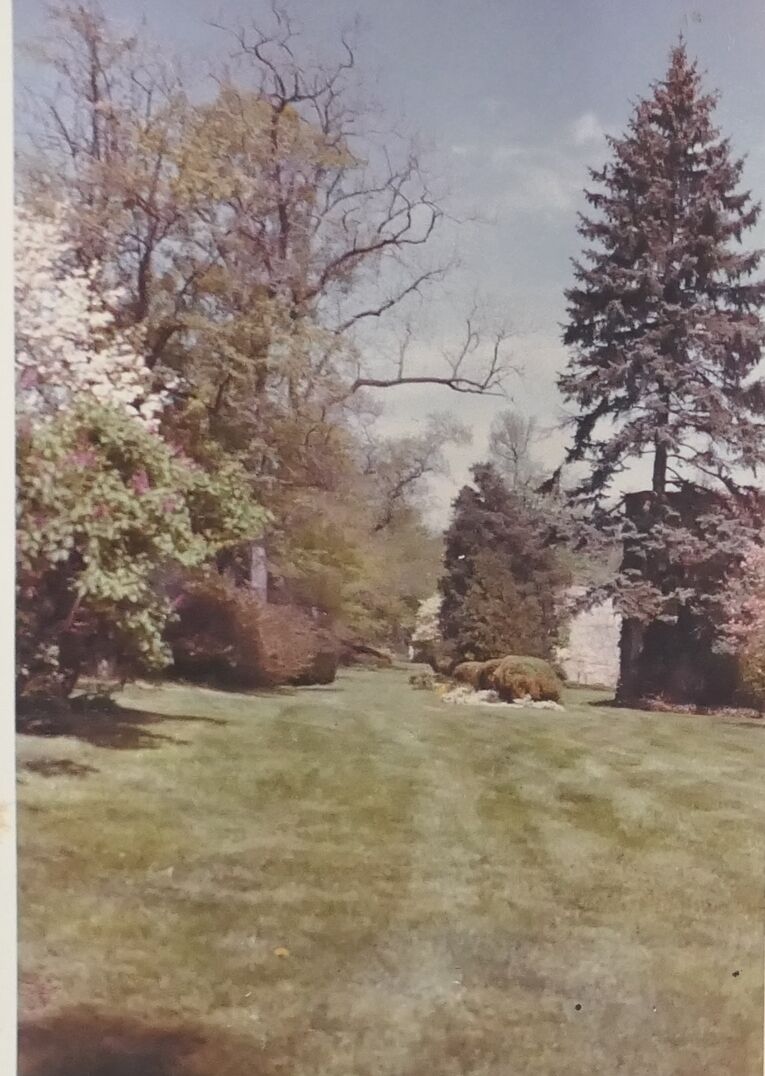
Green Walk, 1968.
I purchased numerous dwarfs which helped the new bed. The remainder of the collection was offered as a gift by the Bergman’s who died not long afterwards. A major portion of the collection had been saved, although I have added new specimens over the years, much is owed to the Bergman’s generosity. I know they would enjoy it now and would be amazed to see what Andalusia soil has done to their dwarfs. Yearly heavy clipping does battle with obviously happy conifers and Japanese maples bursting beyond their proscribed borders.
Emma would approve. All is in order along the “Green Walk”.
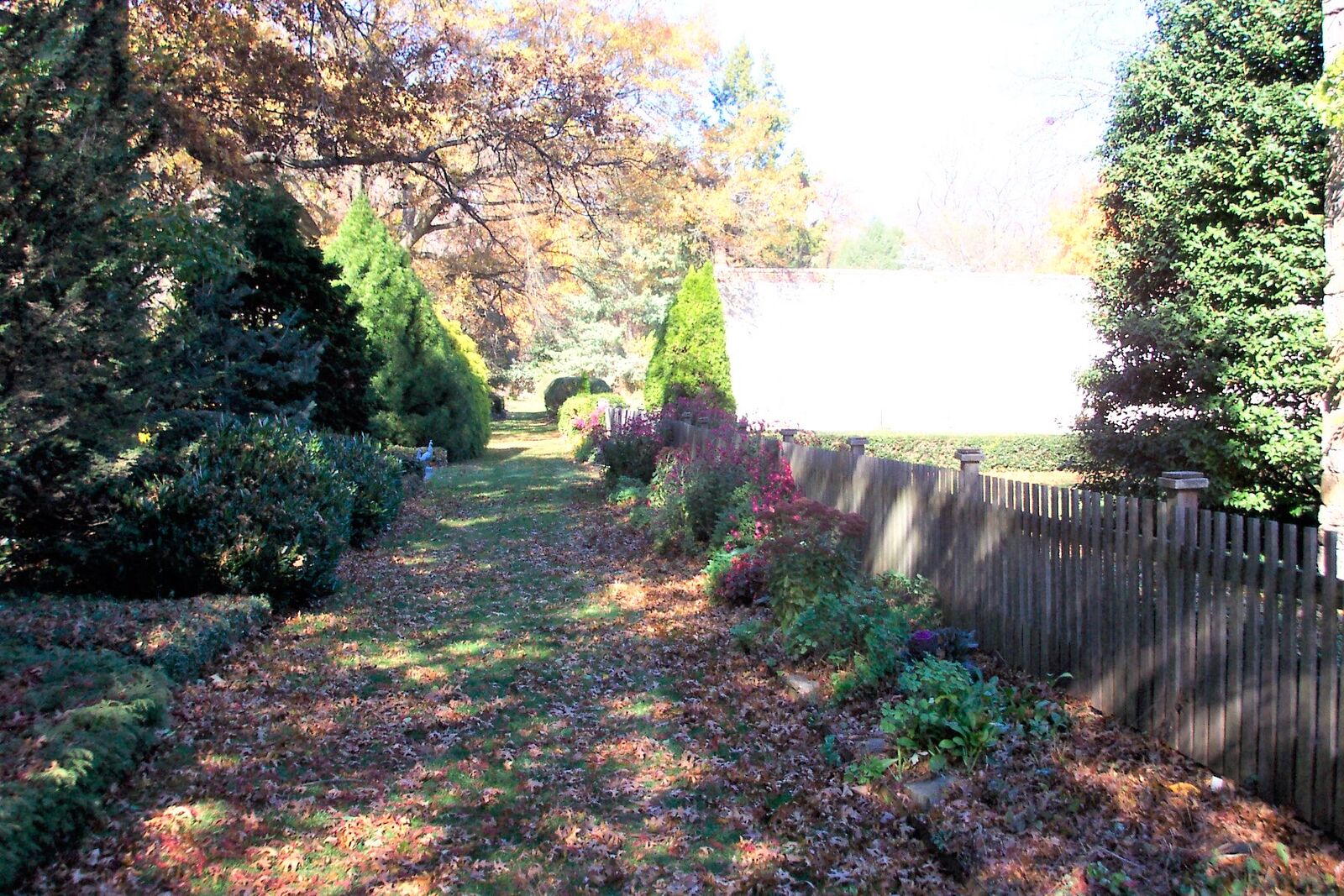
Green Walk, Autumn 2004.
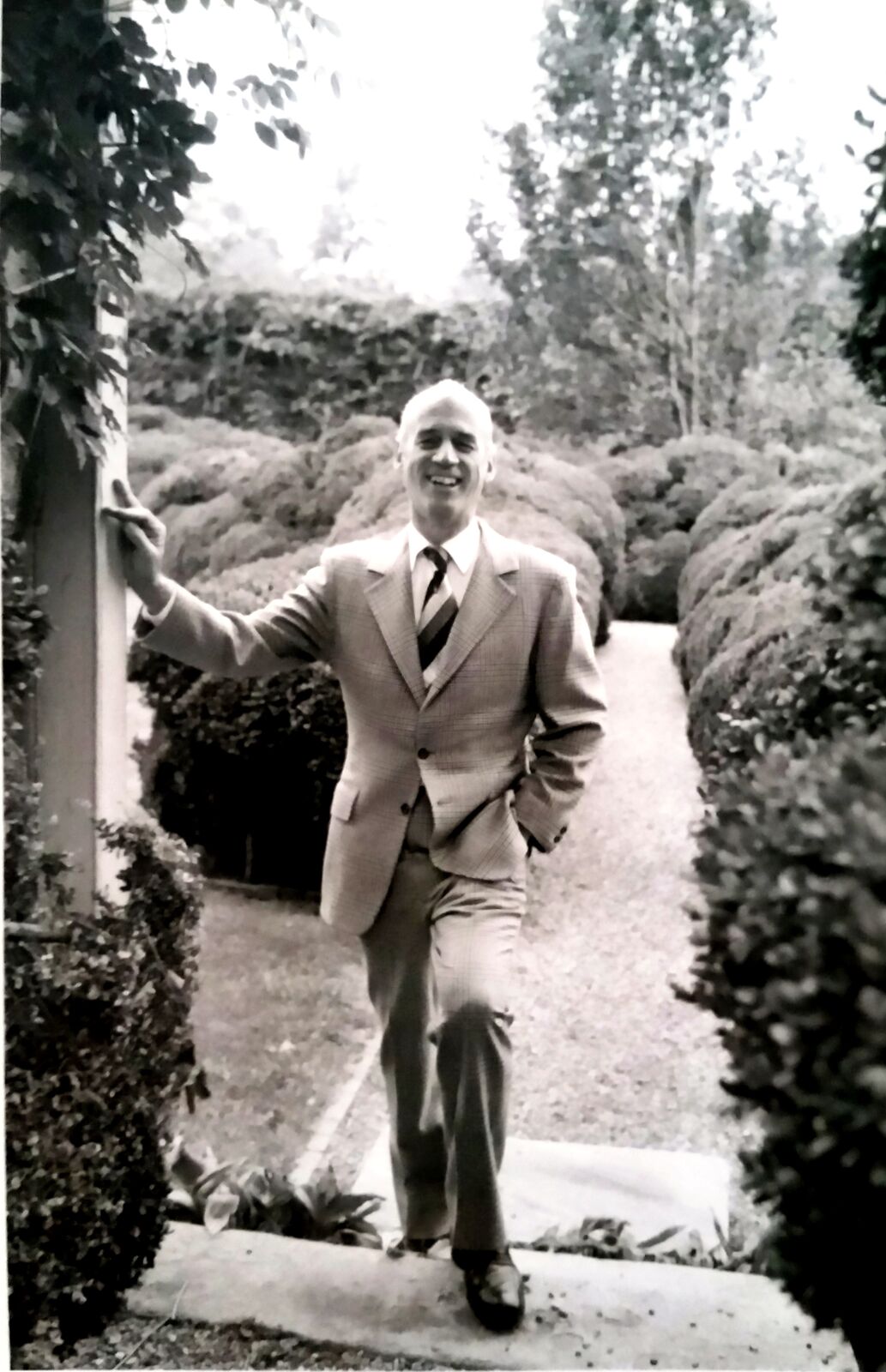
Jimmy Biddle, Walled Garden Boxwood, c 1980.
Part Two of the Green Walk history outlining the recent changes by British landscape designer, Arabella Lennox-Boyd will follow later this summer.
Editing and photos added by
Connie S. Griffith Houchins, Executive Director

